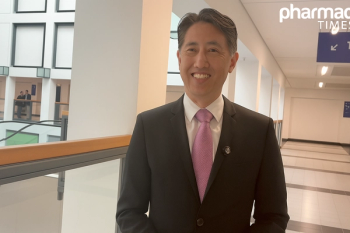
Income Level Influences Early Relapse in Pediatric Leukemia Patients
The cost of treating pediatric cancer can force higher-income families into poverty.
Children from low income areas who suffer from acute lymphoblastic leukemia (ALL) are more likely to relapse early.
A study published in Pediatric Blood & Cancer evaluated 575 children newly diagnosed with ALL between the ages of 1 and 18-years-old. The patients were treated as part of the Dana-Farber Cancer Institute ALL Consortium Protocol at 7 major academic medical centers between 2000 and 2010 in the United States.
Researchers used US Census Bureau criteria to determine who fell under the high-poverty line. According to researchers, this was defined as zip codes where 20% or more of residents had income that was below the federal poverty level. This is equal to a family of 4 with an annual income of $24,250 or less.
"These children are getting the same best possible care at well-resourced institutions from highly trained clinicians, and we're still seeing disparities," said lead researcher Kira Bona, MD, MPH. "In trying to improve cure rates, we, as a field, have focused almost exclusively on biology. If we want to move forward, we also have to look at social determinants.”
The results of the study showed that although the overall rates of relapse were comparable in the 2 groups, the timing of relapse was significantly different. In fact, it was reported that 92% of high poverty area children had early recurrence of cancer in less than 36 months after remission. This compares with 48% of children who relapse early.
"In this country, 20% of children live in poverty," Bona said. "Furthermore, we know that the costs of having a child treated for cancer force higher-income families into poverty. If we can devise successful interventions, that's at least 20% of children with cancer whose outcomes we can potentially impact. Any 'moon shot' to cure cancer must include interventions that target socio-economic disparities in outcomes."
Difference in data is not statistically significant after adjustment for other variables (p=0.07), but it does show possible disparity, the study noted. Eighty-five percent of children in high-poverty areas survived 5 years or longer, compared with 92% of other children.
Prior population-based research of children with ALL, which included children who had an array of treatments, found lower rates of overall survival among children from low-income families.
Prospective research is looking to explore the relationship between socio-economic status and outcomes, as well as allowing the development of poverty-targeted interventions.
A study published in September 2015 found that one-third of families who have children with cancer suffered food, housing, or energy insecurity just 6 months after the start of treatment.
Researchers will look to the underlying mechanisms in the relationship between socioeconomic status and early relapse, which includes oral chemotherapy and dose reductions because of a child’s health.
Prior research has shown that children who come from low-income families have the potential to face issues with adherence to oral chemotherapy regimens. They also found that general pediatrics showed children from low-income families had worse underlying health than other children, which can lead to dose reductions or delays in chemotherapy.
Future research will include a qualitative study with in-depth interviews of patient families. They will look into knowledge and experience to determine factors that could explain the disparity in the outcomes and find factors that can be targeted with interventions.
"Doing these next 2 studies is incredibly important," Dr. Bona said. "This study told us that simply providing the current best treatment regimen is not good enough if our goal is to cure every child with cancer. At the same time that we develop new drugs and new treatment protocols, we need to address social determinants of health. Findings from these next studies will help us develop specific interventions to address disparities in outcomes. That's an amazing opportunity."
Newsletter
Stay informed on drug updates, treatment guidelines, and pharmacy practice trends—subscribe to Pharmacy Times for weekly clinical insights.















































































































































































































